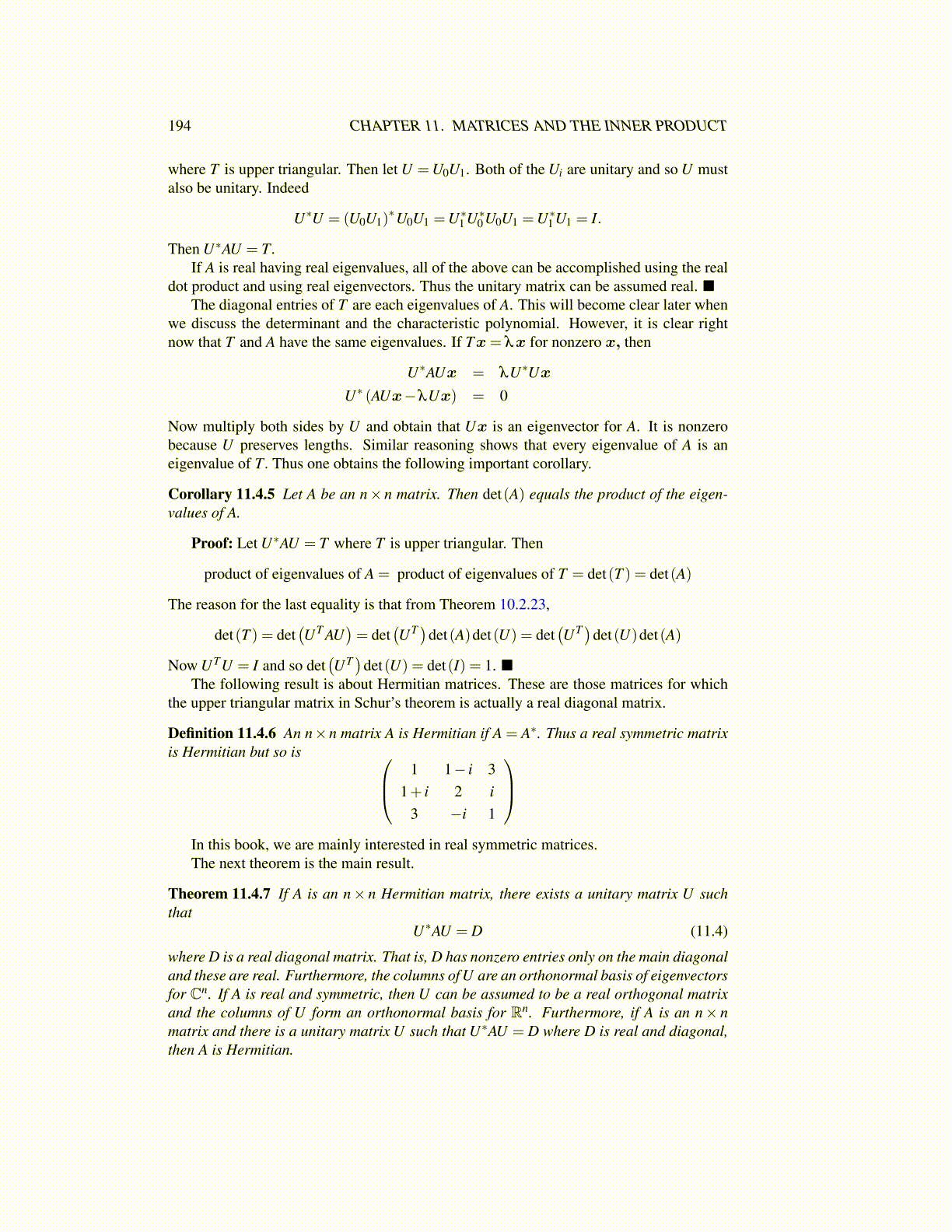
194 CHAPTER 11. MATRICES AND THE INNER PRODUCT
where T is upper triangular. Then let U =U0U1. Both of the Ui are unitary and so U mustalso be unitary. Indeed
U∗U = (U0U1)∗U0U1 =U∗1 U∗0 U0U1 =U∗1 U1 = I.
Then U∗AU = T.If A is real having real eigenvalues, all of the above can be accomplished using the real
dot product and using real eigenvectors. Thus the unitary matrix can be assumed real. ■The diagonal entries of T are each eigenvalues of A. This will become clear later when
we discuss the determinant and the characteristic polynomial. However, it is clear rightnow that T and A have the same eigenvalues. If Tx= λx for nonzero x, then
U∗AUx = λU∗Ux
U∗ (AUx−λUx) = 0
Now multiply both sides by U and obtain that Ux is an eigenvector for A. It is nonzerobecause U preserves lengths. Similar reasoning shows that every eigenvalue of A is aneigenvalue of T. Thus one obtains the following important corollary.
Corollary 11.4.5 Let A be an n× n matrix. Then det(A) equals the product of the eigen-values of A.
Proof: Let U∗AU = T where T is upper triangular. Then
product of eigenvalues of A = product of eigenvalues of T = det(T ) = det(A)
The reason for the last equality is that from Theorem 10.2.23,
det(T ) = det(UT AU
)= det
(UT )det(A)det(U) = det
(UT )det(U)det(A)
Now UTU = I and so det(UT)
det(U) = det(I) = 1. ■The following result is about Hermitian matrices. These are those matrices for which
the upper triangular matrix in Schur’s theorem is actually a real diagonal matrix.
Definition 11.4.6 An n×n matrix A is Hermitian if A = A∗. Thus a real symmetric matrixis Hermitian but so is 1 1− i 3
1+ i 2 i3 −i 1
In this book, we are mainly interested in real symmetric matrices.The next theorem is the main result.
Theorem 11.4.7 If A is an n× n Hermitian matrix, there exists a unitary matrix U suchthat
U∗AU = D (11.4)
where D is a real diagonal matrix. That is, D has nonzero entries only on the main diagonaland these are real. Furthermore, the columns of U are an orthonormal basis of eigenvectorsfor Cn. If A is real and symmetric, then U can be assumed to be a real orthogonal matrixand the columns of U form an orthonormal basis for Rn. Furthermore, if A is an n× nmatrix and there is a unitary matrix U such that U∗AU = D where D is real and diagonal,then A is Hermitian.